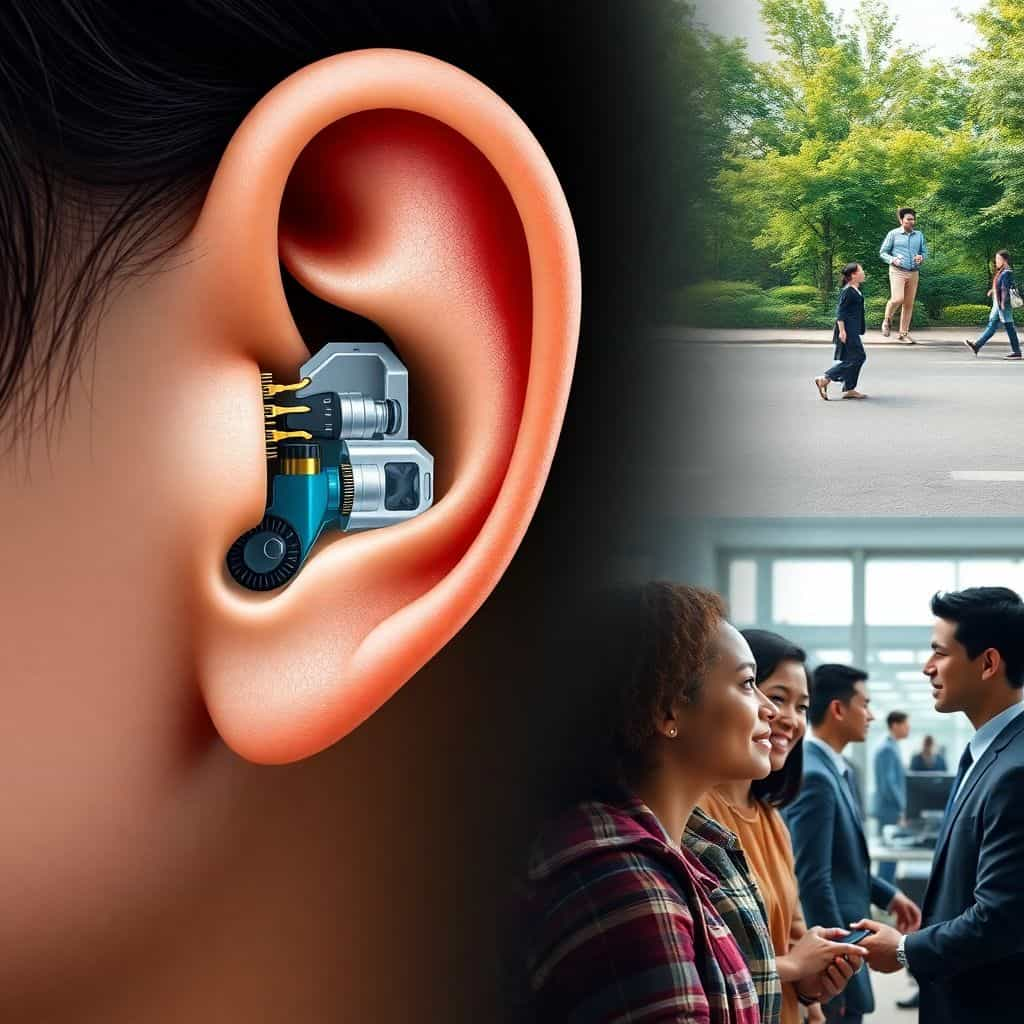In recent years, the field of audiology has witnessed remarkable advancements, particularly in the development of internal hearing aids. Unlike the traditional external devices that sit behind or inside the outer ear, internal hearing aids are surgically implanted to provide more seamless and prolonged auditory support. These devices have become a beacon of hope for many who suffer from severe to profound hearing loss.
Internal hearing aids, commonly referred to as cochlear implants, include a small electronic device that can bypass damaged or nonfunctional parts of the ear and directly stimulate the auditory nerve. This intricate technology has not only revolutionized the way hearing impairments are addressed but has also significantly improved the quality of life for countless individuals around the globe.
The primary components of a cochlear implant include an external part that captures and processes sound, and an internal component that’s surgically placed under the skin. These devices transform sound waves into electrical signals, which are interpreted by the brain as sound. This contrasts sharply with hearing aids which only amplify sound without translating it.
Globally, the incidence of internal hearing aid usage varies with a notable prominence in developed regions. A report by the World Health Organization points out that North America and Europe take the lead in the adoption of these devices due to superior healthcare infrastructure and greater awareness. In contrast, developing nations face hurdles like limited access to surgical facilities and financial constraints, which hinder the prevalence of these implants.
In Asia, particularly in countries like Japan and South Korea, there is a growing trend towards the early implementation of cochlear implants in young children. This early intervention is believed to significantly aid in language development and social integration. Experts argue that cultural factors, combined with strong governmental support for healthcare technologies, have played a pivotal role in this region’s success.
Africa and parts of South America, however, lag in accessibility to internal hearing aids. Reports highlight that financial constraints and inadequate medical infrastructure severely limit the availability and awareness of such devices. Nonetheless, international aid organizations are attempting to bridge this gap through philanthropic initiatives focused on providing hearing healthcare.
Recent studies have highlighted the potential benefits of integrating digital and AI technology with internal hearing aids. Advanced algorithms can now offer personalized hearing experiences by analyzing the user’s environment and automatically adjusting settings for optimal sound clarity. This breakthrough is akin to having a smart assistant within the cochlear implant, which adapts to different auditory environments seamlessly.
One intriguing area of ongoing research is the development of totally implantable cochlear devices. Unlike current models that require an external processor, these devices promise complete invisibility beneath the skin, offering a more discreet hearing solution. Researchers are optimistic about these devices’ future, although challenges persist, particularly regarding battery life and signal processing.
In parallel, scientists are exploring the possibility of biological integration, where implanted devices could potentially work in harmony with biological processes. The prospect of regenerating damaged hair cells in the cochlea is another exciting frontier, which could lead to self-repairing hearing aids in the future.
Despite technological advances, misconceptions about internal hearing aids persist. A common belief is that these devices restore hearing to ‘normal.’ However, experts are quick to clarify that while cochlear implants significantly improve hearing capabilities, they do not replicate the exact sound quality experienced with normal hearing. The brain, over time, learns to interpret these signals effectively, enhancing the user’s hearing capabilities.
According to Dr. Emily Howard, an audiologist with over twenty years of experience, ‘The greatest hurdle is often the initial adaptation period, where the brain adjusts to processing electrical signals instead of natural sound. However, the outcomes, especially for congenital deafness, are overwhelmingly positive.’
The acceptance and demand for internal hearing aids continue to rise, driven by their potential to restore communication and enhance quality of life broadly. Organizations are increasingly recognizing the importance of hearing health, leading to improved diagnostics and public awareness campaigns aimed at early detection and intervention.
In conclusion, while there are significant advancements in internal hearing aids, the challenges and disparities in access remain. Yet, the future of cochlear implants and related technologies seems promising. As research presses on towards improving the efficacy, aesthetic, and accessibility of these devices, millions stand to benefit from the ability to hear more clearly and experience the world in higher definition.
You may also like
Elderly Care with Caregivers: Costs and Benefits Across Regions
Elderly care with professional caregivers has become a crucial service in our aging societies. This article delves into the proposals, costs, and benefits of hiring caregivers, as well as the geographical variances in care options and challenges.
Elderly Care in Nursing Homes: Proposals, Costs and Advantages
This article explores the intricacies of elderly care in nursing homes, shedding light on various proposals, costs, and benefits. It delves into regional differences in elderly care practices and explores the social, economic, and emotional impacts on families and caregivers.
External Hearing Aids: Technologies and emerging innovations
Exploring the landscape of external hearing aids, this article delves into current technologies, emerging innovations, and geographical trends in usage. The piece provides insights into the devices available on the market and the futuristic studies reshaping the hearing aid industry.
Dental Aligners: Modern Methods and Emerging Treatments in Orthodontics
This in-depth article explores the world of dental aligners, covering existing methodologies, treatments, and challenges specific to pediatric cases. It also examines the incidence of orthodontic interventions across various geographical regions and delves into innovative studies on experimental dental aligners.
